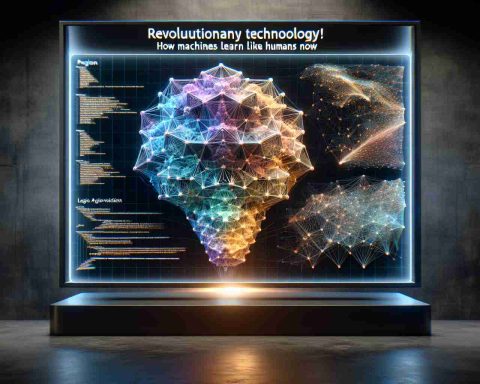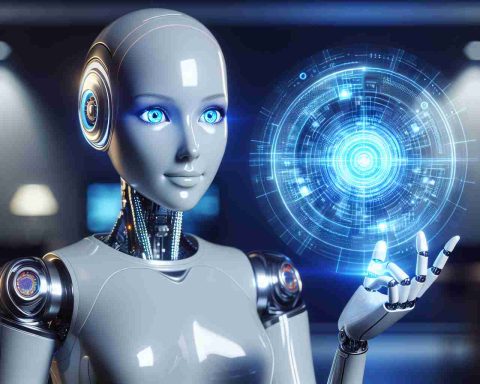The introduction of artificial intelligence (AI) tools is reshaping how employees approach their daily responsibilities. While some professionals acknowledge that these innovations might one day threaten their positions, many are leveraging AI to enhance productivity and streamline repetitive tasks.
For instance, Gabrielle Gerbus, a freelance branding consultant, has significantly reduced her client communication time by utilizing AI tools like Jasper and ChatGPT. She estimates these technologies save her approximately four to five hours each week, allowing her to maintain consistent quality in her responses. Despite this advantage, Gerbus harbors concerns about the potential for AI to automate key aspects of her role, particularly in copywriting and brand strategy.
Workers like Tricia LaRue and Ankit Anchlia are similarly adapting to AI. They employ AI tools for tasks such as drafting proposals, running data analyses, and streamlining project management. LaRue, in particular, highlights the efficiency gained from AI, which allows her to focus on higher-level marketing strategies.
However, the landscape remains uncertain. A Goldman Sachs report indicates that up to 300 million jobs worldwide could face disruption. In response, some workers are preemptively acquiring AI skills to secure their roles amid this evolving environment. As employees navigate the complexities and possibilities of AI, their adaptability and willingness to embrace this technology may ultimately determine their professional survival in an AI-driven future.
Embracing AI in the Workplace: A Double-Edged Sword for Employees
As artificial intelligence (AI) continues to permeate various sectors, its impact on the workplace remains a focal point of discussion. While many employees are turning to AI as a means to increase efficiency, others harbor anxieties about job security. The dichotomy of opportunity and risk creates a complex scenario for workers navigating the new technological landscape.
What are the primary advantages of AI in the workplace?
1. Enhanced Productivity: AI tools can automate routine tasks, allowing employees to dedicate more time to strategic thinking and decision-making. For example, AI-driven analytics can process data faster than humans, providing insights that inform business strategies.
2. Improved Accuracy and Reduced Errors: AI systems can minimize human errors in data processing and analysis. This is particularly beneficial in fields such as finance and healthcare, where precision is critical.
3. Increased Innovation: By automating basic tasks, employees can utilize their creativity to develop new products and services. AI can serve as a catalyst for innovative thinking within teams.
What are the significant disadvantages associated with AI adoption?
1. Job Displacement: One of the most pressing concerns is the potential for AI to replace jobs, particularly in roles that involve repetitive or routine tasks. This could lead to significant unemployment in certain sectors.
2. Skill Gap: As technology evolves, there is a growing need for employees to acquire new skills. Not all workers have equal access to training opportunities, which can exacerbate inequalities within the workforce.
3. Dependence on Technology: An overreliance on AI tools can lead to diminished critical thinking and problem-solving skills among employees. In situations where human judgment is required, this dependence can be detrimental.
What are the key challenges and controversies surrounding AI in the workplace?
1. Ethical Concerns: The use of AI raises ethical questions regarding privacy, data security, and algorithmic bias. Employees may feel uncomfortable about how their data is being utilized and the implications it has for their privacy.
2. Disruption of Workplace Culture: The integration of AI can alter workplace dynamics and relationships. Employees may feel alienated by their reliance on technology, leading to a loss of collaboration and community within teams.
3. Regulatory Scrutiny: As AI technologies proliferate, they attract the attention of regulators. Companies must navigate a web of compliance issues that vary by location and industry, adding complexity to the implementation of AI solutions.
How can employees and organizations strike a balance in this AI-driven landscape?
1. Continuous Learning: To future-proof their careers, employees should embrace a mindset of lifelong learning. Organizations can support this by offering training programs that increase digital literacy and AI competencies.
2. Human-AI Collaboration: Encouraging a symbiotic relationship between human workers and AI can maximize efficiency while preserving the crucial contributions that humans provide.
3. Open Communication: By fostering transparent discussions about AI’s role in the workplace, employers can mitigate fears and uncertainties among their teams, ensuring that employees feel valued and included in the technological transition.
As workers face the dual-edged sword of AI in the workplace, the focus must remain on creating environments that promote adaptability, ethical practices, and employee engagement. The trajectory of AI’s integration into society will hinge on how individuals and organizations approach these challenges collectively.
For more insights on AI’s impact on employment and strategies for adaptation, visit Forbes.


















